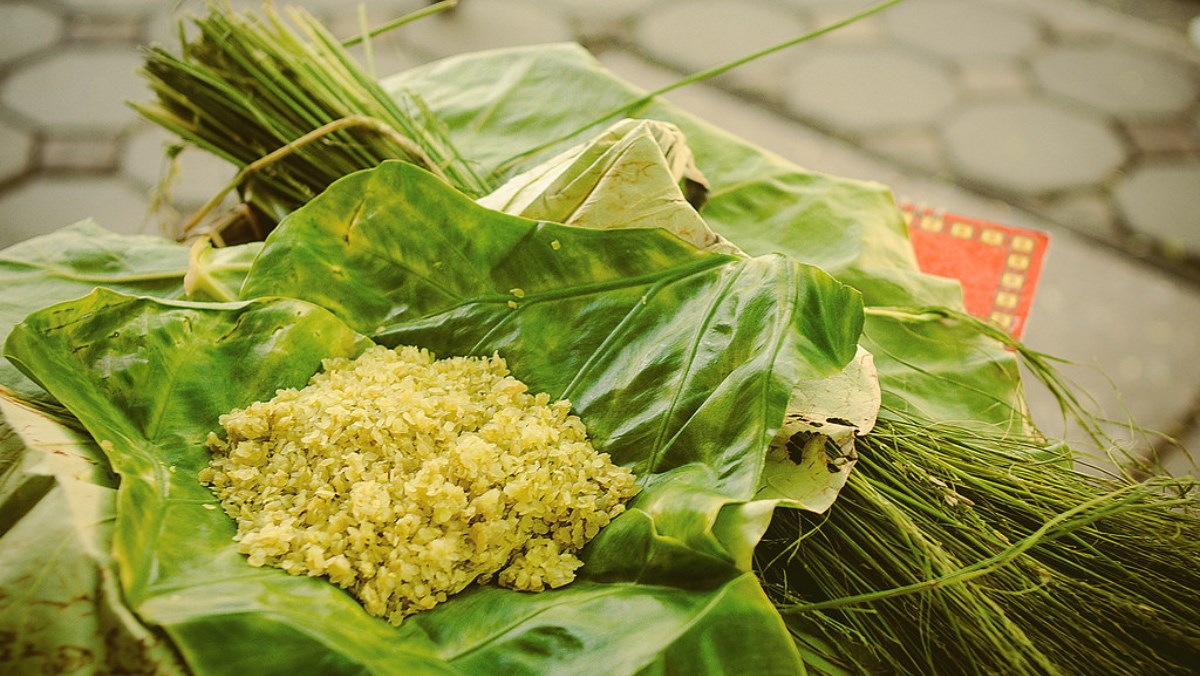Fifty years ago, fresh green rice flakes symbolized purity and renewal. They still do. But they also taste great on ice cream.
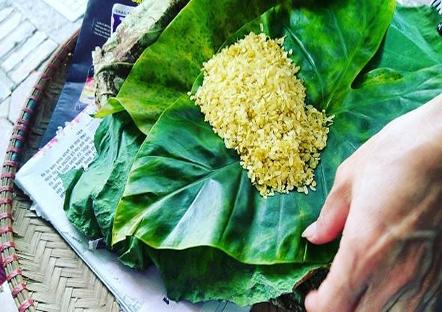
You have to look hard, these days, for honest com. (cốm)
During a narrow window between August and October, farmers north of Vietnam’s capital pick immature sticky rice kernels, roast them over a wood fire and pound them with mortar and pestle into green-yellow flakes. Lotus leaves help preserve their sweet aroma as street vendors carry them to market.
Vietnamese women believe they smooth the skin and have included them in detox diets since the early 18th century. Cooks value their bright, nutty flavor—something not unlike sweet corn.
More than anything, the capital has looked to com as a pure expression of love, amity and veneration. Every autumn, children gift com to elders who place it on the family altar.
Poet, spy and proto-foodie Vu Bang said Hanoi’s seasonal craving for com was cultivated over centuries—so much so that Bang believed thoughts of com “deepened the sorrows of far-flung Hanoians as autumn’s clouds breezed in.”
Hanoi’s urban sprawl has swallowed the villages he considered the best sources for com (Vong, Me Tri and Lu).
Today, com at its finest can only be found in the baskets of a few proud, aging street hawkers.
A sleepless business
Kha has sold green rice flakes on the fringe of Hom market and Vong village since she was 16.
At 80, she continues to wake up at 3 a.m. to begin pounding and roasting fresh green rice flakes she buys from farmers in outlying provinces. At precisely 5 a.m., you can find her in front of Vong village gate – 46 Tran Thai Tong Street. Her operation consists of a basket, scales, lotus leaves and a single plastic glove.
“I live in the alley across the street. Whenever I run out of com, my younger brother runs out with more.”
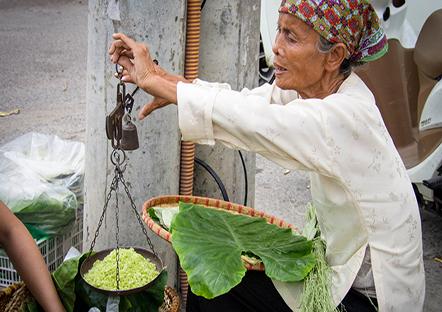
After a hundred years of sales, com Vong has become something of a national brand. Kha says only six families still sell the genuine article.
“There are a number of fakes,” she said. “Real com Vong is neither dry nor damp even when left to sit out all day. Other varieties need to be sprayed down, every few hours.”
As its reputation grew, com Vong became the subject of a terrible scandal. In 2014, Dan Tri published an undercover expose that featured hidden camera footage of vendors dying baskets of com green.
“If you want it beautiful, you’ve got to use industrial dyes, otherwise it just doesn’t look pretty,” said a shirtless, tattooed man with a blurred face.
The secret ingredient in Me Tri village’s lesser com as “malachite green” a chemical dye banned for use in Vietnam for its carcinogenic properties. Com-related deaths have yet to be reported, but old masters like Kha have struggled to maintain their prestige.
She keeps a small pile of business cards on hand, and speaks proudly about her com being shipped to Vietnamese families abroad. Squatting in the early morning traffic, her eyes filled with hope about future markets in Europe and the United States.
All that’s green isn’t gold.
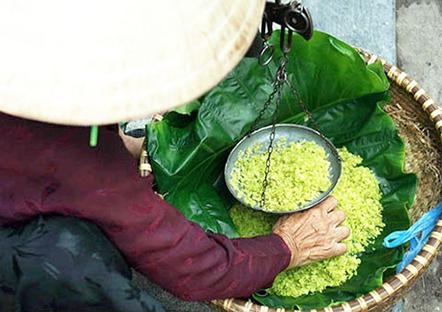
Do Thi Lang has sold com for 45 years near Truc Bach Lake and doesn’t bother with the com Vong brand. Instead, Lang says she’s proud of her own product. “Com should have a yellow glow, instead of being fern green,” she said.
Lang likewise wakes at 3 a.m. every day to ready her wares and settle into her patch of pavement on Chau Long by dawn. She takes the utmost care in packaging her kernels in a neat square presentation.
“I’m proud of my com,” she said gently unfurling a lotus leaf. “You can take pictures, but please be quick, or the flavor will fade.”
In Vu Bang’s autumn, smitten Hanoi men got to work carefully arranging betrothal baskets loaded with com and persimmons for the parents of their intended.
Quoting a popular poem, Bang described the final lament of a broken-hearted suitor in his day:
“I can’t believe she’s already engaged! Now the com will be left to rot!”
Modern Hanoians remain hard at work finding ways to make the green stuff last.
Some melt it into porridge. Many more mix com into sweet cakes that continue to provide the principal step toward a happy marriage.
Single, hungry customers must elbow past wholesale buyers to belly up to the counter at 11 Hang Than where a family has sold sweetcom cakes since the middle of the 19th century.
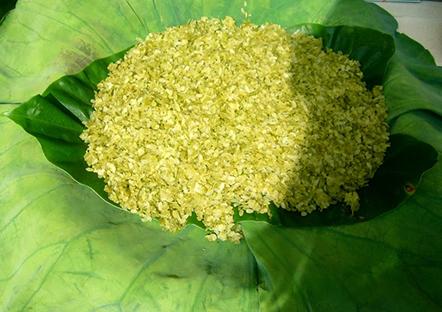
The crush of demand strains the patience of the cashier, who looks upon the merely hungry in astonished disbelief.
An order for any less than 10 elicits the same incredulous reply: “Only?”
Every day, the shop cranks out thousands of cakes for engagement parties, Buddhist venerations and nostalgic expatriates pining for their sweetness overseas.
VnExpress International found a lunch of com-studded deep-fried meatballs rather delightful, but the old foodie simply couldn’t tolerate the thought of wasting the graceful com on greasy pork.
He suggested a bowl of steamed white rice instead–“just to spare the luxury.”
Thousands more find their way into the bellies of hungry Hanoians in search of a quick snack, breakfast or dessert

